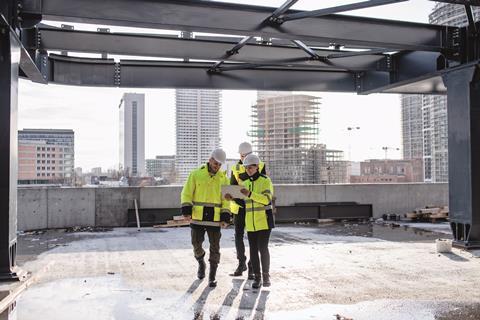The construction sector is a cornerstone of modern economies, playing an indispensable role in shaping the infrastructure that supports our daily lives.

While the sector contributes a significant 13% to global GDP, it is grappling with challenges that have hindered its full growth potential, including labour productivity increasing by just 1% annually over the past 20 years. This pales in comparison to the 2.8% growth rate in the total world economy and 3.6% for manufacturing.
The McKinsey Global Institute highlights that, in the absence of significant changes, meeting the global demand for infrastructure and housing will become increasingly difficult. Yet if construction productivity were to align with the overall economy, the industry’s added value could rise by $1.6trn (£1.3trn) per year. This would address roughly half of the world’s annual infrastructure demands or contribute a 2% increase to global GDP.
The industry is also grappling with cost pressures due to constrained public budgets and housing affordability challenges. Another McKinsey report emphasises how one in three urban households globally faces difficulty affording a place to live at current market rates. These concerns are amplified by the fallout of Covid-19 and the cost-of-living crisis.
A substantial portion of this underperformance can be attributed to the persistent skills and talent shortage, further aggravated by Europe’s ageing population. According to the Construction Skills Network, the UK faces an imminent need for 225,000 new construction workers by 2027.

Similar scenarios are unfolding across Europe. Portugal last year called for an additional 80,000 construction workers, and the Financial Times this summer revealed that Italian employers had requested more than 240,000 permits this year to meet their labour requirements, highlighting the gravity of the issue.
As the shortage of skilled labour intensifies, current workers find themselves increasingly burdened with extended onsite working hours, giving rise to an additional concern: a staggering 75% of construction professionals express concerns about worker fatigue.
To address the current crisis, firms must take proactive measures to attract new talent, while also ensuring the wellbeing of their current workforce.
Gender inequality is also a pressing issue in the construction sector. As of the second quarter of 2023, Statista reports a workforce of around 1.8 million men in the UK’s construction industry, in stark contrast to the 340,000 women employed in the same sector.
Reducing this gender employment gap offers substantial economic advantages. The European Commission estimates that it costs the EU €370bn (£320bn) annually, and the Organization for Economic Cooperation and Development suggests that Germany’s GDP could rise by 9% if women’s employment equalled men’s. Similarly, Italy’s economy could grow by as much as 14%.
Up the appeal
The under-representation of women in Europe’s construction workforce goes beyond the nature of the roles. Outdated perspectives on equality and bias have contributed to the industry’s reputation as a ‘man’s career’, despite this stereotype being outdated and irrelevant.
Additionally, the sector’s average gender pay gap is 23.8%, surpassing the overall UK average. Women in construction also face limited opportunities for career advancement and lower bonuses compared with male equivalents.
Moreover, in construction, where personal protective equipment (PPE) is vital for safety, the PPE provided has been tailored to fit the male physique. This leaves women with uncomfortable or ill-fitting gear, increasing their vulnerability to workplace injuries.
Maternity schemes in the industry are often subpar compared with other sectors. Further challenges persist with expensive childcare and certain tax systems that incentivise women to stay at home. Given these obstacles, it’s not surprising that women represent a small fraction of the construction workforce.
The industry demands specific skills and knowledge, making qualifications essential for success. But many companies prioritise experienced candidates over younger applicants, leaving aspiring individuals in need of comprehensive training. This often stems from cost- and time-saving considerations, creating significant barriers for young people entering the industry.
Also, the younger generation values flexibility and remote working, which is not readily available in construction. While complete remote working may not be feasible due to onsite requirements, there are opportunities for increased flexibility that many companies overlook. Offering more flexible schedules could appeal to and engage the younger generation.
It is crucial to address these challenges. Europe’s ageing workforce, skills and talent shortages and inflation concerns require urgent action. Initiatives such as changing outdated perceptions, ensuring fair compensation and implementing supportive maternity schemes can attract and retain women, fostering industry growth.
Focusing on accessible training, expanded apprenticeships and flexible working will also make the sector more appealing to young people. Adapting to their preferences will attract new talent and nurture innovation for a brighter future.
Angelica Donati is chief executive of Donati Immobiliare Group































No comments yet